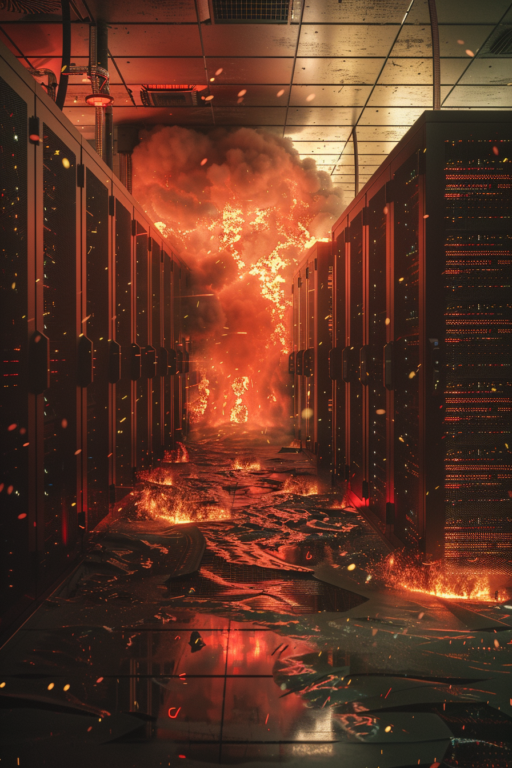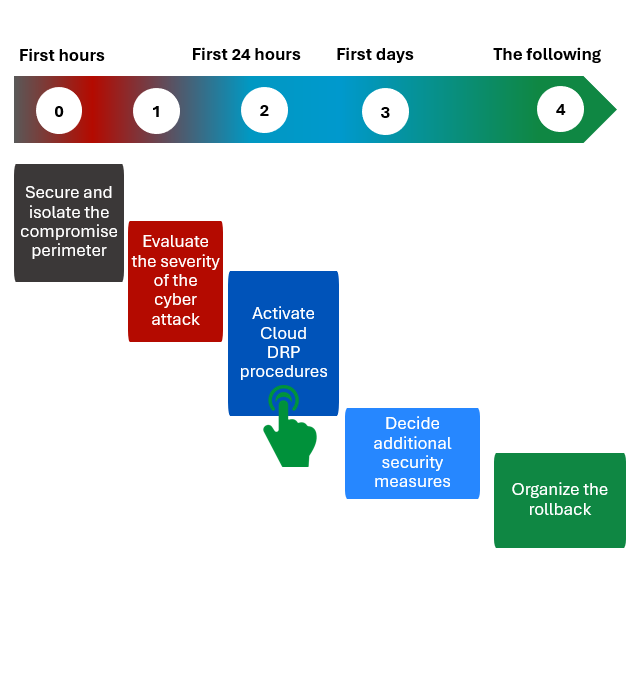
Risk Scenarios to be covered by a Disaster Recovery Plan
Every company must identify the risks it wishes to cover in a DRP context, which can include:
- Natural Disaster: Windstorm | Forest Fire | Earthquake | Flood
- Fire: Datacenter Fire, Building or Site Fire
- Utility Failure: Air Conditioning Stop | Datacenter Power Outage
- Human Crisis: State Terrorism Attack | Strike
- Cyber Attack: Phishing, ransomware, Ddos, …
- Complex IT Incident: Hypervisor failure
These risks will then be translated into risk scenarios for IT and business operations.
The concept of prolonged unavailability, characteristic of a DRP, differs from the concept of temporary unavailability, which is addressed by critical incident management of its high-availability information system architecture.
For each company, this boundary between temporary and prolonged unavailability can range from a few hours to a few days.

The objectives of operational crisis management of a cyber-origin crisis
Compared to other crisis scenarios that may require the activation of a DRP, cyber crises have their own characteristics:
- Immediate impacts (stopping of certain activities, inability to deliver services, etc.).
- Uncertainties regarding the scope of the compromise.
- Complexity in deciding what can be restarted in DRP mode or not, and in what order, this being related to:
- The vector of the attack: is it a ransomware commanded from the outside, …
- Potential propagation to other external organizations due to the interconnection of IT systems.
In the first few hours, it can be difficult to distinguish an IT incident from a cyber incident. Technical teams must attempt to detect weak signals to shut down systems if necessary.
To provide the best experiences, we use technologies such as cookies to store and/or access device information. Consenting to these technologies will allow us to process data such as browsing behavior or unique IDs on this site. Failure to consent or withdrawing consent may negatively impact certain features and functions.
